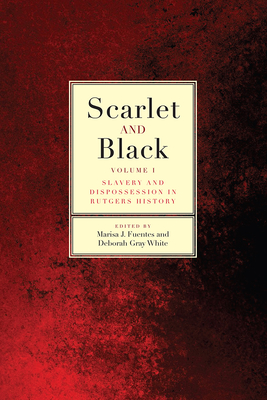Scarlet and Black: Slavery and Dispossession in Rutgers History (Paperback)
Description
The 250th anniversary of the founding of Rutgers University is a perfect moment for the Rutgers community to reconcile its past, and acknowledge its role in the enslavement and debasement of African Americans and the disfranchisement and elimination of Native American people and culture.
Scarlet and Black documents the history of Rutgers’s connection to slavery, which was neither casual nor accidental—nor unusual. Like most early American colleges, Rutgers depended on slaves to build its campuses and serve its students and faculty; it depended on the sale of black people to fund its very existence. Men like John Henry Livingston, (Rutgers president from 1810–1824), the Reverend Philip Milledoler, (president of Rutgers from 1824–1840), Henry Rutgers, (trustee after whom the college is named), and Theodore Frelinghuysen, (Rutgers’s seventh president), were among the most ardent anti-abolitionists in the mid-Atlantic.
Scarlet and black are the colors Rutgers University uses to represent itself to the nation and world. They are the colors the athletes compete in, the graduates and administrators wear on celebratory occasions, and the colors that distinguish Rutgers from every other university in the United States. This book, however, uses these colors to signify something else: the blood that was spilled on the banks of the Raritan River by those dispossessed of their land and the bodies that labored unpaid and in bondage so that Rutgers could be built and sustained. The contributors to this volume offer this history as a usable one—not to tear down or weaken this very renowned, robust, and growing institution—but to strengthen it and help direct its course for the future.
The work of the Committee on Enslaved and Disenfranchised Population in Rutgers History.
Visit the project's website at http://scarletandblack.rutgers.edu
About the Author
MARISA J. FUENTES is an associate professor in women’s and gender studies and history at Rutgers University, New Brunswick, New Jersey. She is the author of Dispossessed Lives: Enslaved Women, Violence, and the Archive.
DEBORAH GRAY WHITE is a Board of Governors Distinguished Professor of History at Rutgers University, New Brunswick. She is the author or editor of numerous books including, Ar’n’t I A Woman? Female Slaves in the Plantation South.
Praise For…
"A sweeping new report reveals ties to slavery and the displacement of the Native Americans at one of the country’s top colleges. The findings about 250-year-old Rutgers University were published in a new book, "Scarlet and Black, Volume 1: Slavery and Dispossession in Rutgers History." It details the history of some of the institution’s founders, presidents and trustees as slave owners, anti-abolitionists and participants in slave trading. Rutgers is one of several colleges and universities across the country now grappling with their historical ties to slavery, including Georgetown, Yale and Harvard. For more, we speak with Marisa Fuentes, director of research for the team that produced "Scarlet and Black." She is an associate professor of women’s and gender studies and history at Rutgers."
View the entire segment aired on Democracy Now! https://www.youtube.com/watch?v=3l8EAk1sxvQ&feature=share
— Democracy Now!
"A number of colleges across the nation are taking steps to confront their own historical ties to racism and slavery, and one of those is Rutgers — New Jersey's state university. Last week, the school published a book called Scarlet and Black, Volume 1: Slavery and Dispossession in Rutgers History. Among other things, the report details how some of the university's most prominent figures participated in the slave trade, and how Rutgers benefited from the displacement of Native Americans from their lands.
WNYC's David Furst spoke with Rutgers history professor Deborah Gray White, who chairs the Committee on Enslaved and Disenfranchised Populations in Rutgers History, which undertook the work of writing the book."
Listen to the entire WNYC report here: http://www.wnyc.org/story/rutgers-university-recognizes-historical-ties-racism-and-slavery-new-report/— WNYC-FM (National Public Radio)
According to the Committee's research published in the book Scarlet and Black: Slavery and Disposession in Rutgers History, Sojourner Truth and her parents were owned by Rutgers' first president.
— RU-tv Network
"How Colleges Confront Their Racist Pasts" by Kristen Doerer
— Chronicle of Higher Education
"Scarlet and Black features admirably readable prose and a unified tone, which is especially impressive considering that, with one exception, every chapter lists multiple coauthors. Yet, each chapter is distinct and self-contained enough to stand on its own, providing educators at both the high school and college levels with the opportunity to use excerpts to teach often-ignored components of New Jersey’s early history."
— New Jersey Studies

